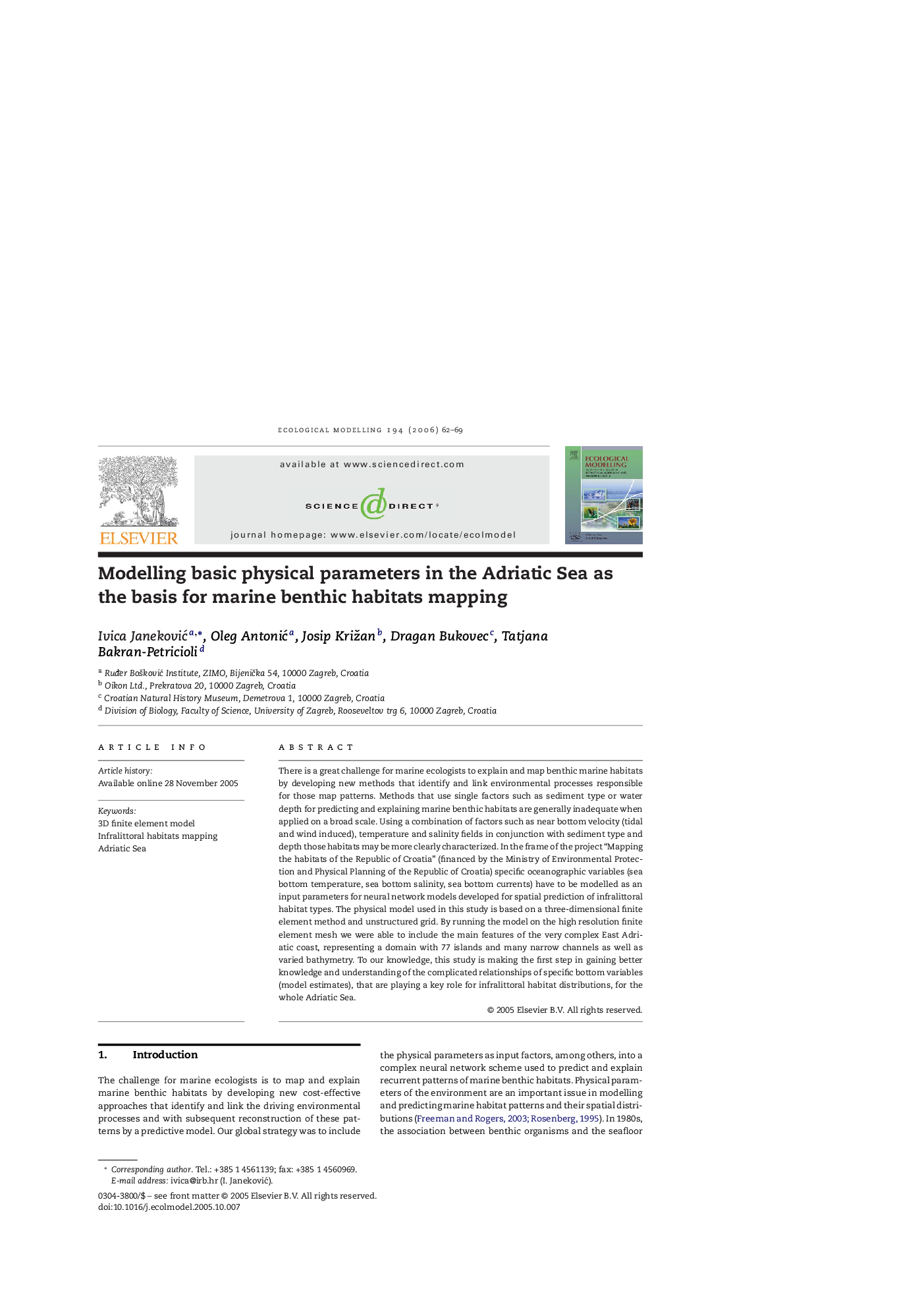| Article ID | Journal | Published Year | Pages | File Type |
|---|---|---|---|---|
| 4379179 | Ecological Modelling | 2006 | 8 Pages |
There is a great challenge for marine ecologists to explain and map benthic marine habitats by developing new methods that identify and link environmental processes responsible for those map patterns. Methods that use single factors such as sediment type or water depth for predicting and explaining marine benthic habitats are generally inadequate when applied on a broad scale. Using a combination of factors such as near bottom velocity (tidal and wind induced), temperature and salinity fields in conjunction with sediment type and depth those habitats may be more clearly characterized. In the frame of the project “Mapping the habitats of the Republic of Croatia” (financed by the Ministry of Environmental Protection and Physical Planning of the Republic of Croatia) specific oceanographic variables (sea bottom temperature, sea bottom salinity, sea bottom currents) have to be modelled as an input parameters for neural network models developed for spatial prediction of infralittoral habitat types. The physical model used in this study is based on a three-dimensional finite element method and unstructured grid. By running the model on the high resolution finite element mesh we were able to include the main features of the very complex East Adriatic coast, representing a domain with 77 islands and many narrow channels as well as varied bathymetry. To our knowledge, this study is making the first step in gaining better knowledge and understanding of the complicated relationships of specific bottom variables (model estimates), that are playing a key role for infralittoral habitat distributions, for the whole Adriatic Sea.
